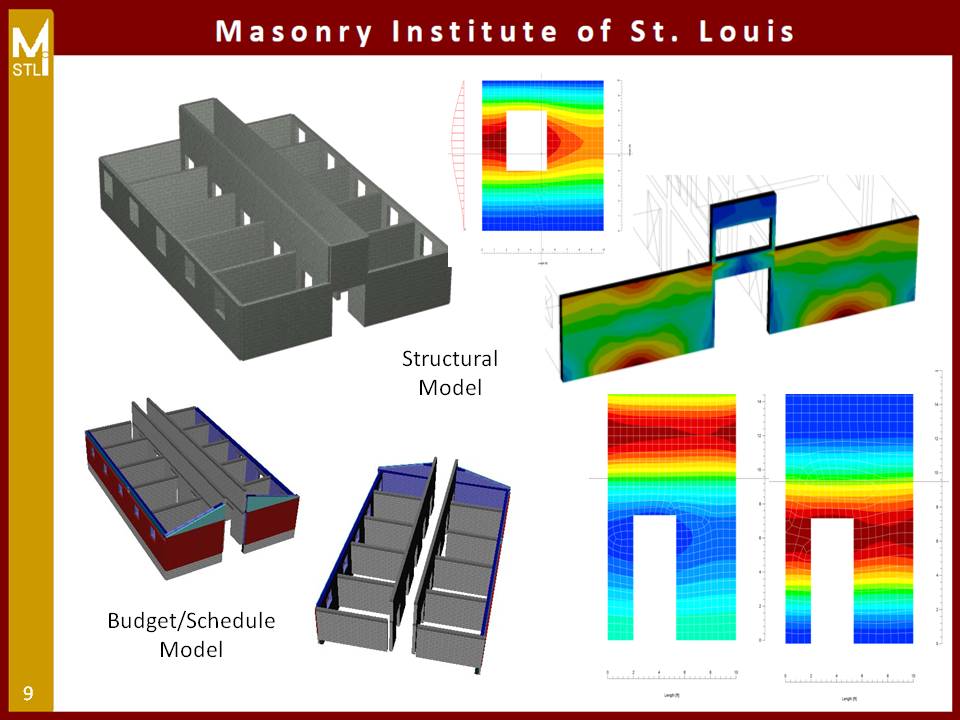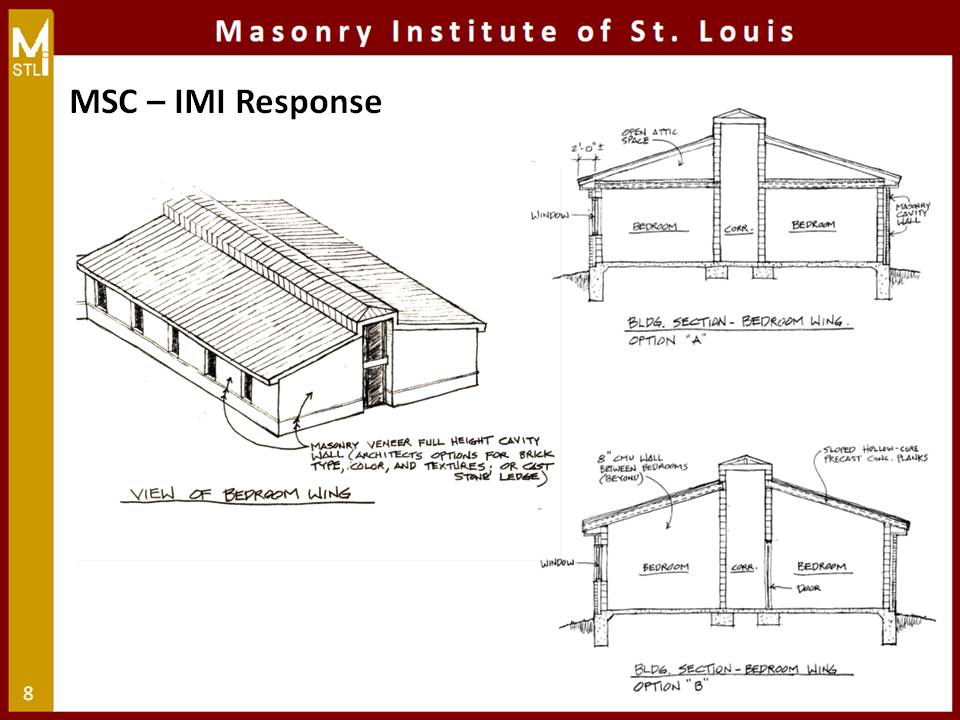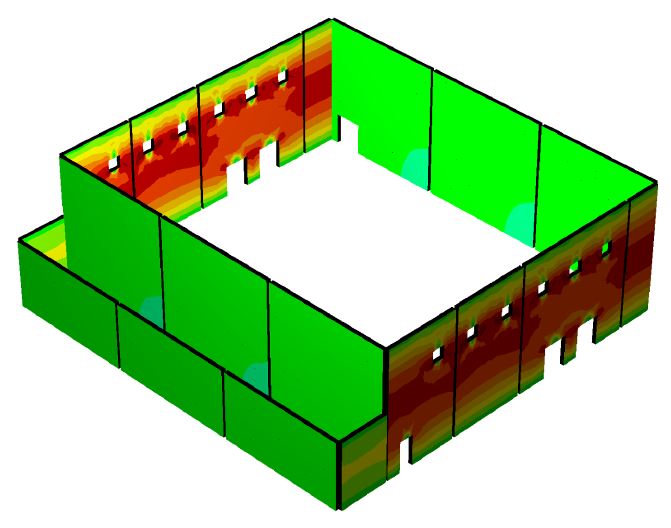We love Brick!
My dad says a bricklayer is an “Artistic Manipulator of Burnt Clay Products”. He’s right! However, in our region, we have determined if we want more brick, we need more masonry structural backup systems. Brick, which is a clay product, has huge compressive qualities, and many jobs are constructed with a through wall brick. However, in our region, most masonry structural systems are constructed with concrete masonry units (CMU). This means block. For us it makes sense that we can lay more brick if we can have more structural block backup because our mason contractor is already onsite and is highly skilled in delivering the best wall system on the market, the insulated masonry cavity wall!
In order to grow the masonry market, we need everyone’s help. We need an alliance of those in the industry dedicated to the growth of structural masonry. We need a coalition!
What is a Masonry Structural Coalition?
Simply put, masonry structural coalitions are those that are dedicated to coming together to gain more structural masonry through project specific visits with decision makers.
The Coalition in our region consists of the Masonry Institute of Southern Illinois, Mason Contractors Association of St. Louis, Midwest Brick and Block, Irwin Building Products (who happens to be the local Hydro Mobile distributor), Spec Mix, Raineri Building Products, The International Masonry Institute and the Masonry Institute of St. Louis.
When on a masonry structural coalition meeting with a decision maker, all aspects of their project as it relates to masonry are covered. We have a mason contractor present to speak to constructability, pricing, schedules and efficiencies through the use of 3D models utilizing Tradesmen’s software; the material supplier provides the expert knowledge for the product lines. It is important to note that the material supplier is often the major link to the architectural community.
They are the ones speaking with and visiting the design community every day. For our coalition, this is a major part of our success. Special recognition is in order for Mark Wilhelms and Danielle Bach of Midwest Block and Brick for their success in bringing the Coalition to the decision makers for direct discussion on their particular projects. Our technical experts include Darrell McMillian, P.E., of the Masonry Institute of St. Louis and the professional staff and consultants of the International Masonry Institute, which covers all structural-related masonry. Finally, there must be a coordinator dedicated to pulling this all together in an organized, timely fashion so the decision maker can continue to move along with his or her schedule.
Everyone wants to know who is the decision maker.
There is no hard fast answer to the question. Sure, you may be able to point to the decision makers after the project is underway, but the question needs to be asked well before drawings and the start of the job. The conceptual stage of design is the sweet spot. At this point of the process designers are contemplating structural wall systems. And we all know how the construction schedule has been compressed; well, that schedule is even more intense for the designers drawing your plans.
In comes the “Masonry Structural Coalition”.
The Coalition is acutely aware of the designers’ compressed schedule and asks to evaluate masonry wall options parallel with the design team. The Coalition then evaluates and analyzes the structure using the appropriate code for proper reinforcement, block size and energy compliance. With the proper specifications for reinforcement, a model is constructed using Tradesmen’s software and is accompanied with the pricing associated with the proper construction of the project. We then discuss what can be expected in terms of schedules.
Why do we need a coalition?
With the continuous improvement in technology has come the consolidation of manufacturing facilities. This improves economies on one hand, and on the other translates into less sales people pounding the pavement into the designer’s offices.
In addition, the delivery systems for construction continue to change. There are still many traditional Design/Bid/Build projects, but we are seeing more and more use of other delivery systems, such as, Design Build projects (DB) or Integrated Project Delivery (IPD). Mason contractors are the ones who have the relationship with the builders. When we started the coalition we expected to find the architect less influential within the non-traditional delivery systems. However, we discovered they are still on all projects. Focusing on the architect has given us the most success to date.
Actually, the architect or any key decision maker needs even more reliable and up to date information so they can make the best decision as it relates to the structural system of choice for their project.
Finally, the Coalition brings the mason contractor closer to the early design stages.
How does it work?
Early in the life of this regional Coalition we experienced great success. Mark and Danielle arranged for a visit to the architectural firm that was designing a large hospital scheduled for construction a year later. Brian Grant of Grant Contracting, Darrell McMillian of MISL, Mark and Danielle of Midwest Block and Brick and I attended the first meeting. It is important to note that this was not an educational visit and we were there to speak directly about this specific project. Over the next few months, we listened to the architects and engineers looking for any opportunities for masonry to solve their problems. We asked if we could help with providing cost information and started working immediately. We involved the IMI, in particular, Diane Throop, P.E., Scott Walkowicz, P.E., and Bob Campbell AIA. Bob used his extensive experience as a practicing architect to hand sketch some possible masonry solutions instead of the precast concrete being considered for the project. Diane and Scott analyzed and designed the walls in keeping with Bob’s sketches and in accordance with the building code while Brian Grant provided pricing and scheduling for the proposed options. We had several visits in which McMillian and Grant discussed constructability and detailing for the project. When the job was put out to bid, the design was all masonry, inside and out, with a 30-month schedule. The successful bidder was John J. Smith Masonry, who is currently building the project. The completed project will account for more than 16 million dollars in masonry.
Since then we have had success with other projects, such as car dealerships, schools and a manufacturing facility.
One of the areas for future consideration is contained in the 2015 International Building Code (IBC). For those of us located in the 250 mph wind speed-zone of the FEMA wind map, storm sheltering becomes mandatory for critical emergency operations, such as 911 call stations, fire, rescue, ambulance, and police stations, emergency operations centers. Group E occupancies, K-12 school buildings with occupant load greater than 50 will also require storm sheltering. Masonry shines in this arena because we know the masonry up-charge to achieve shelter status according to the ICC 500 is not great and most of the cost escalation will come from openings and the mechanicals. As a result, the Coalition is starting to see success in school sheltering and has also worked on an electrical co-op. If you are thinking of starting a coalition, the ICC 500 code and sheltering is a great place to focus.
When the Coalition is in discussion with a designer regarding their particular project it is of great importance to ask: “Can we price out the project?” If yes is the answer, we get to work.
Our goal is to eliminate questions and objections to the use of masonry on a given project. The information provided to the designer is no joke. All we require is a floor plan and elevations. If the designer is not to that point yet, great, we can hand draw the floor plan and create the elevations from the discussion. We share finite element analyses, which visually demonstrate that the structure can withstand the loads called out in the building code. We share the detailing of the required reinforcement so they have a good understanding that the pricing we deliver is real time according to the specification that we discussed above. The mason contractor builds the Tradesmen’s software model, which includes the pricing and we discuss the expectations for the construction schedule. We make sure that all associated codes required by the IBC are met, such as the International Code Council 500 (ICC 500), International Energy Code Council (IECC) and TMS 402/602. Once a designer has all of this information in their hands they can evaluate whether or not masonry is the right choice for their project.
If you were the designer, you might have these types of questions in your head: How much will this cost, can it be built on schedule, can this be built to meet current energy codes, will there be lead time on this particular product, how does this compare to competing wall systems? All of these types of questions are answered by the Coalition. And the best part is, the architect now has a model, or picture if you will, in their head that has the associated pricing. This is extremely powerful!
What have we learned?
We have always known the insulated masonry cavity wall or “Premier Wall System” (coined by Dan Zechmeister, P.E.) is the best wall system on the market. Why, you ask? The answer is easy. The multi-wythe cavity wall constructed of a block, rigid insulation, air space (cavity) and brick performs like no other because it is the structure. It will always meet your energy needs, addresses moisture and dew points in your wall, has fantastic sound transmission qualities, easily meets the air barrier requirements (two coats of paint or one coat of blockfill or solid grout) and helps mechanical systems with its thermal mass all while looking awesome! Oh, did I mention fire, mold or the structural redundancy inherent in masonry. Best part is that the initial cost of this wall is extremely competitive when compared to the competition.
We were forced to learn more about our competition. What we discovered was that our masonry walls initial costs are better than our competition. This was a surprise to us in this region. Until we actually researched systems like structural steel studs, precast concrete, tilt-up, steel or concrete structures with stud infill, we had no clue, since we really only knew our own masonry systems. Now we compete head-to-head with the other systems. More times than not, when we get the chance to compete, structural masonry is the material of choice.
There is no silver bullet. Having a person dedicated for a coalition can be difficult and cooperation will come with challenges. You will make mistakes, but, having a coalition does work and brings the design community closer to the mason contractors.



